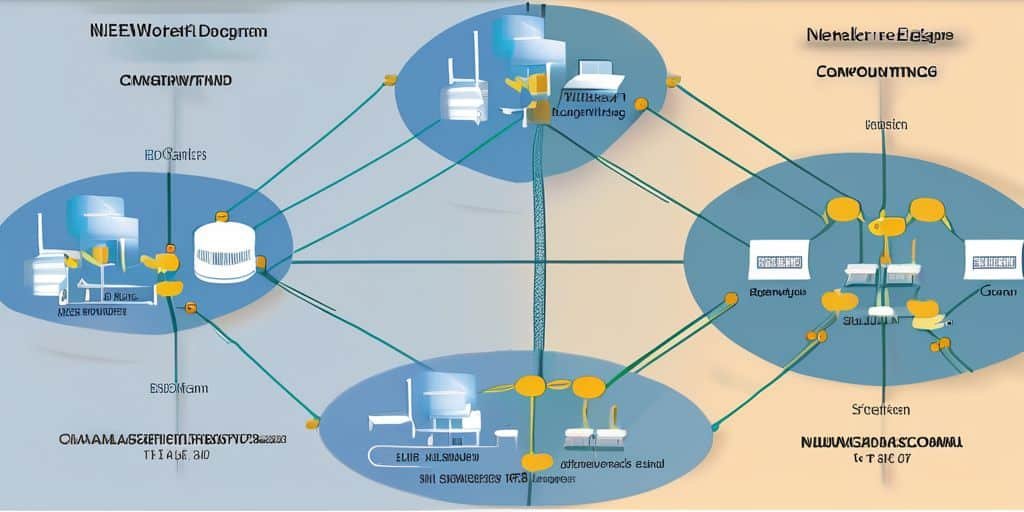The Impact of Edge Computing on Network Technology
Edge computing is revolutionizing the landscape of network technology by bringing computation and data storage closer to the source of data generation. This shift from traditional centralized data centers to decentralized edge nodes offers numerous advantages for modern networks, including reduced latency, improved performance, and enhanced scalability. This blog post explores the impact of edge computing on network technology, highlighting its benefits, challenges, and implications for IT infrastructure.
What is Edge Computing?
Edge computing refers to the practice of processing data near the edge of the network, closer to where the data is generated, rather than relying on a centralized data center. This approach allows for real-time data processing and analytics, reducing the need to send large volumes of data to distant servers. Edge computing leverages distributed computing resources to improve efficiency, performance, and responsiveness.
Key Benefits of Edge Computing
1. Reduced Latency
One of the most significant advantages of edge computing is the reduction in latency. By processing data locally at the edge of the network, edge computing minimizes the time it takes for data to travel to and from centralized data centers. This is particularly important for applications requiring real-time processing, such as:
- IoT Devices: IoT applications benefit from reduced latency for real-time data analysis and decision-making.
- Autonomous Vehicles: Edge computing enables faster response times for autonomous driving systems.

2. Improved Network Performance
Edge computing enhances network performance by offloading processing tasks from centralized data centers to edge nodes. This distributed approach helps:
- Decrease Bandwidth Usage: By processing data locally, edge computing reduces the amount of data that needs to be transmitted over the network, alleviating bandwidth congestion.
- Enhance Data Throughput: Local processing allows for higher data throughput and faster access to critical information.
3. Enhanced Reliability and Resilience
Edge computing improves network reliability and resilience by distributing computing resources across multiple locations. Key benefits include:
- Fault Tolerance: Edge nodes can continue to operate independently if a central data center experiences an outage, ensuring continuous service availability.
- Local Redundancy: Redundant edge nodes provide backup processing capabilities, enhancing overall network resilience.
4. Scalability and Flexibility
Edge computing offers greater scalability and flexibility for network infrastructure. Key aspects include:
- Modular Deployment: Edge nodes can be deployed incrementally, allowing for scalable growth based on demand.
- Adaptability: Edge computing can be easily adapted to support new applications and use cases, accommodating evolving business needs.
5. Enhanced Security
By processing and storing data locally, edge computing can improve security by:
- Reducing Data Transmission Risks: Less data transmitted over the network minimizes the risk of data interception and breaches.
- Local Data Processing: Sensitive data can be processed and analyzed locally, reducing the exposure of critical information to potential threats.
Challenges of Edge Computing
1. Infrastructure Complexity
Deploying and managing edge computing infrastructure can be complex due to the distributed nature of edge nodes. Key challenges include:
- Hardware Management: Maintaining and updating a large number of distributed edge devices requires careful coordination and management.
- Network Connectivity: Ensuring reliable connectivity between edge nodes and central systems can be challenging, particularly in remote or underserved areas.
2. Data Privacy and Compliance
Edge computing introduces new data privacy and compliance considerations:
- Data Localization: Managing data privacy regulations and compliance requirements for data processed at the edge can be complex.
- Security Measures: Implementing robust security measures for edge devices is essential to protect sensitive data and maintain compliance.
3. Resource Constraints
Edge nodes often have limited computational and storage resources compared to centralized data centers. Key considerations include:
- Performance Limitations: Edge devices may have less processing power and storage capacity, which can impact the performance of resource-intensive applications.
- Energy Consumption: Efficient energy management is crucial for maintaining the performance and longevity of edge devices.
The Future of Edge Computing and Network Technology
As edge computing continues to evolve, its impact on network technology will likely grow. Key trends and developments to watch include:
1. Integration with 5G Networks
Edge computing will play a critical role in the rollout and optimization of 5G networks. The combination of edge computing and 5G will enable:
- Ultra-Low Latency: 5G networks and edge computing together will support ultra-low latency applications, such as augmented reality (AR) and virtual reality (VR).
- Enhanced Network Efficiency: 5G will enhance edge computing capabilities by providing faster and more reliable connectivity.
2. Increased Adoption of AI and Machine Learning
The integration of artificial intelligence (AI) and machine learning (ML) with edge computing will drive new innovations:
- Edge AI: AI algorithms deployed at the edge will enable real-time data analysis and decision-making, improving application performance and intelligence.
- Predictive Maintenance: Machine learning models running at the edge will support predictive maintenance and optimization for network and device management.
3. Advancements in Edge Security
As edge computing becomes more prevalent, advancements in edge security will be essential to address emerging threats:
- Enhanced Security Protocols: New security protocols and technologies will be developed to protect edge devices and data from cyberattacks.
- Unified Security Management: Tools and platforms for unified security management will help streamline the protection of distributed edge environments.
Conclusion
Edge computing is transforming network technology by offering reduced latency, improved performance, and enhanced scalability. While there are challenges associated with deploying and managing edge infrastructure, the benefits of edge computing make it a valuable addition to modern IT environments. As edge computing continues to advance and integrate with emerging technologies, its impact on network technology will be profound, driving innovation and enhancing the capabilities of connected systems.



